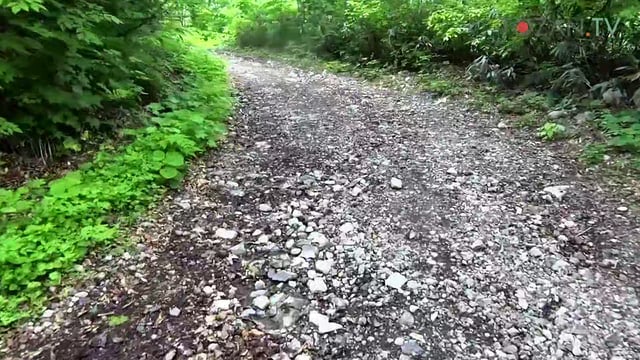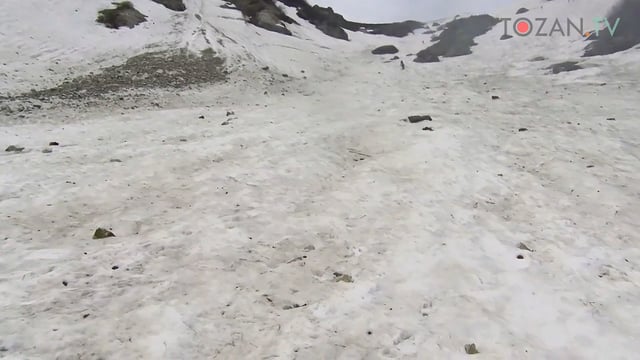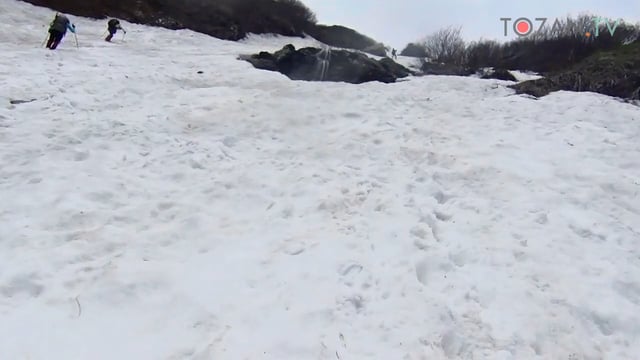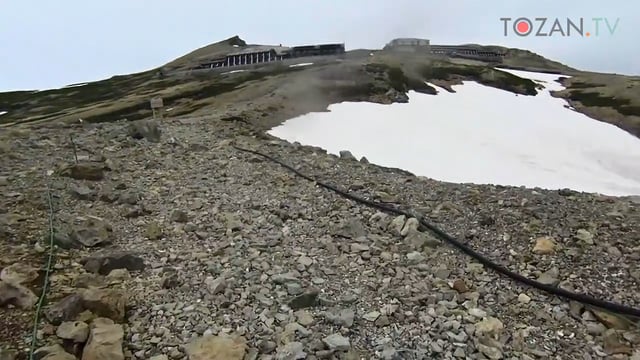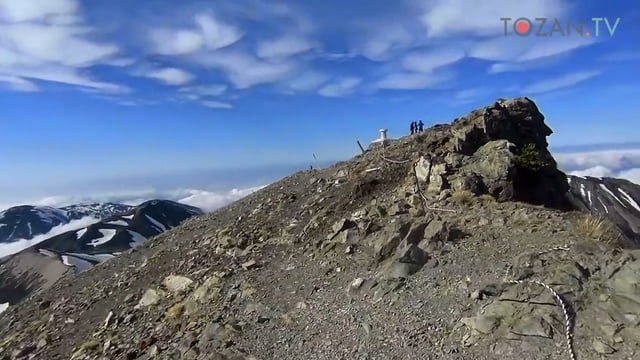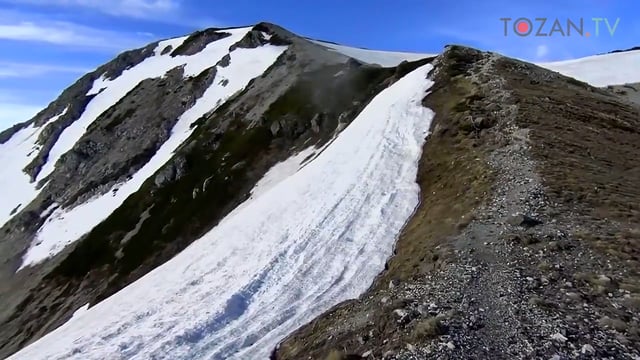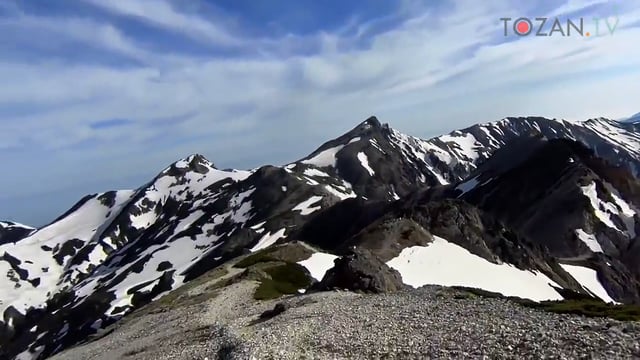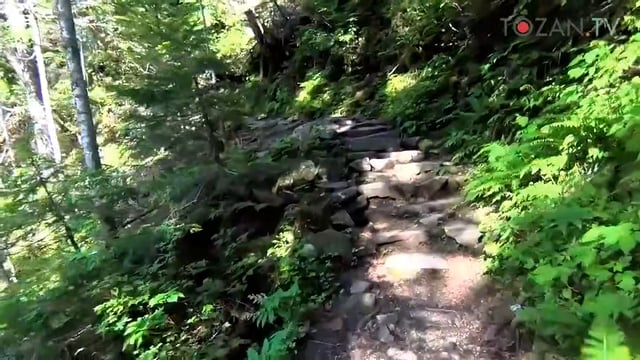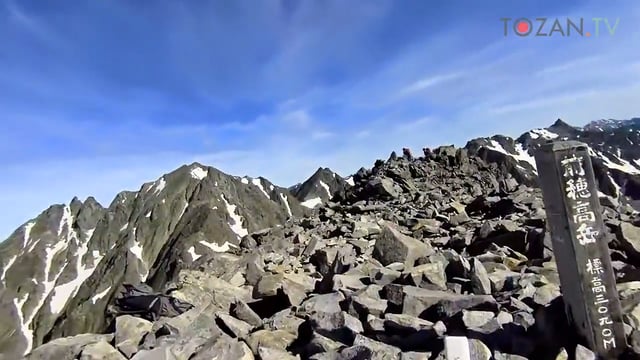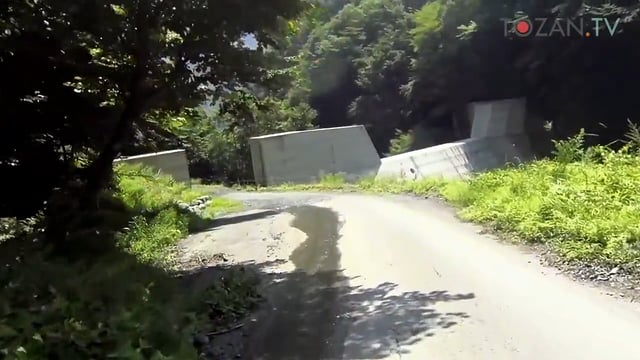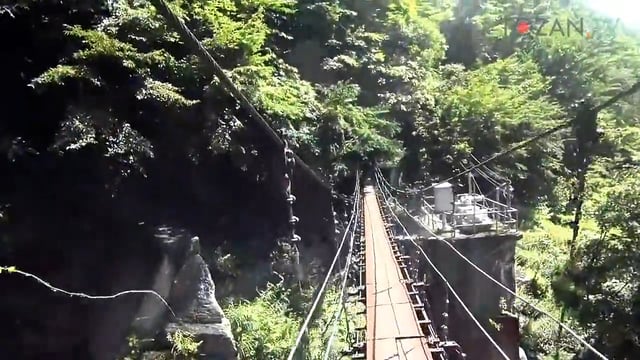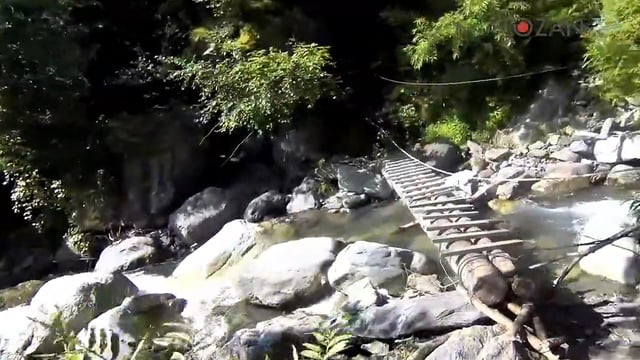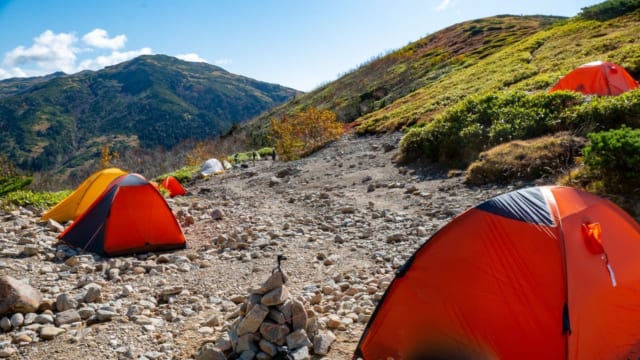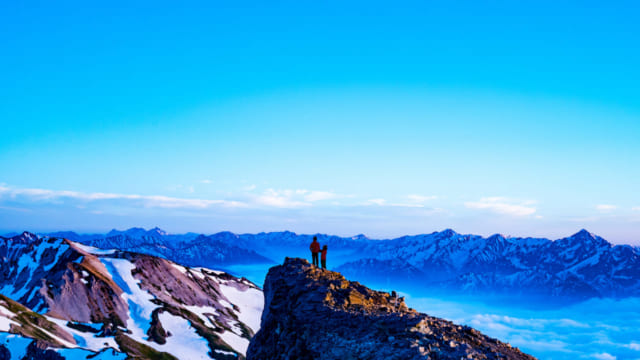| Time | Event |
|---|---|
| 00:07:50 | a bench |
| 00:08:29 | a junction to be heading for Yakushi-dake |
| 00:27:39 | reached the Ichinokoshi-sanso |
From Jyoudo-san to Ichinokoshi-sanso
I walk on the ridge line with taking a side glance at a cairn of Jyoudo-san1. You can see Uraginza2 on the right side, Yarigatake3 on that back.
Near the junction of Oyama4 and Goshikigahara5, You can see Ryuou-dake6, a beautiful mountain. The scene of Tateyama7 is great when the descent to Ichinokoshi-sanso8.
- 浄土山(じょうどさん). "浄土" is the meaning of the Pure Land. One of the Tateyama three mountains(立山三山(たてやまさんざん・Tateyama-sanzan) ↩
- 裏銀座(うらぎんざ). "裏" is the meaning of the back and "銀座" is the meaning of the path where a lot of people gather. It is not about Ginza at Tokyo. This trail starts from Takase dam, Bunatate-one(ブナ立尾根・ぶなたておね) via Eboshi-dake(烏帽子岳・えぼしだけ), Noguchigorou-dake(野口五郎岳), Washiba-dake(鷲羽岳・わしばだけ), Sugoroku-dake(双六岳・すごろくだけ)and end at Yarigatake. ↩
- 槍ヶ岳(やりがたけ). "槍" is the meaning of a lance. Yarigatake is the fifth highest and one of the most famous mountain in Japan. It can be seen not only from the Northern Japanese Alps area but the Southern and the Central though it is hard to find it. However people on the summit where can see the Northern Japanese Alps would look for Yarigatake. ↩
- 雄山(おやま). The main peak of Tateyama. But it is not the highest. The highest peak of Tateyama is Onanji-yama(大汝山・おおなんじやま). ↩
- 五色ヶ原(ごしきがはら). A big plateau located between Tateyama and Yakushigatake. "五色" is the meaning of five colors. Goshikigahara is famous for the place where the alpine plants are in bloom. There is a place where has a same name in Norikura(乗鞍・のりくら) of Nagano(長野・ながの) prefecture. ↩
- 龍王岳(りゅうおうだけ). One of the mountain which consists of Tateyama peaks. It is a sharp shape and stands out but there is no official path to the summit of Ryuou-dake on the map. ↩
- 立山(たてやま). The general name of Oyama(雄山・おやま), Onanji-yama(大汝山・おおなんじやま) and Fuji-no-oritate(富士の折立・ふじのおりたて). But people often point that Oyama when he/she says Tateyama. The highest mountain of Toyama prefecture. ↩
- 一の越山荘(いちのこしさんそう). “山荘” is the meaning of a hut. When we call a hut in Japanese, there are some variations of expression. "小屋(こや・koya/goya)", "山荘(さんそう・sanso)", "小舎(こや・koya/goya)", "ヒュッテ(ひゅって・hutte)", "宿舎(しゅくしゃ・shukusha)" and so on. They are all same meanings, the place where you can use for accommodation, but I think there is no obvious difference between them. ↩










